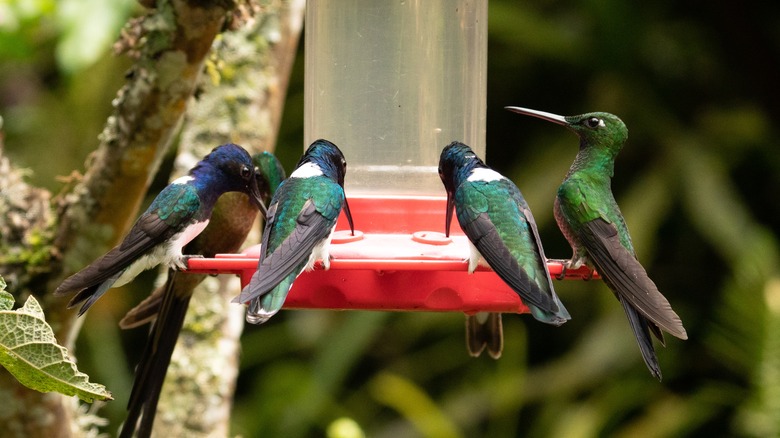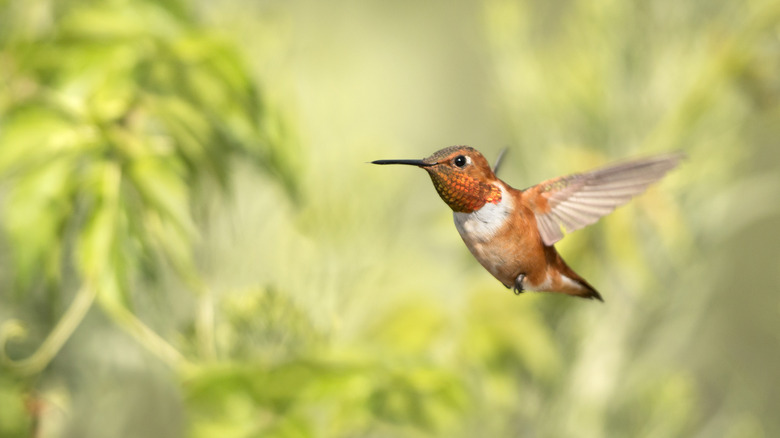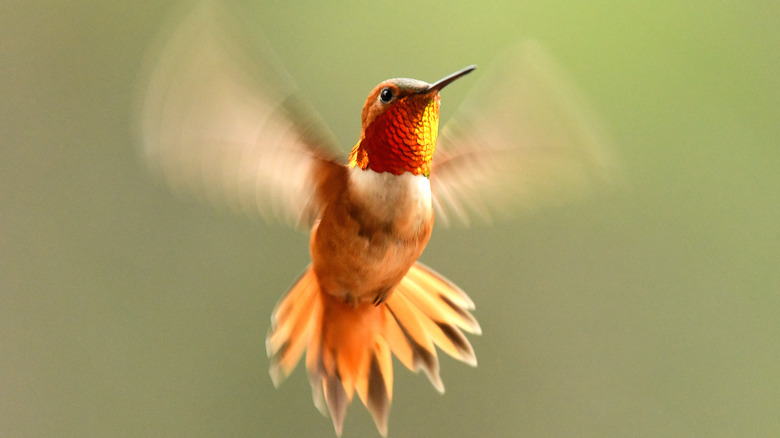The Hummingbird With An Iridescent Red Throat That Might Chase Others Out Of Your Yard
Feeding and watching birds can be a wonderful pastime, and you may be someone who tries attracting more hummingbirds to your yard as they migrate. If you happen to live in the Western portion of Canada, the United States, or Mexico, you might get a chance to see the Rufous hummingbird (Selasphorus rufus). These birds are often much smaller than other varieties of hummingbirds. Rufous hummingbirds are typically beautiful creatures to observe, but they tend to be a bit scrappy. These little birds have no qualms about fighting with other hummingbirds over resources.
Though they are so small, Rufous hummingbirds make an extremely long migration of about 3,000 miles. When winter approaches, these birds will begin their journey from southwest Canada and the northwest United States and fly all the way to Mexico until the weather warms up again. Though Rufous hummingbirds may just be passing through the area, they can still cause drama at your feeders.
Identifying the Rufous hummingbird
If you tend to attract hummingbirds to your garden and notice that they are squabbling over your feeders, you may have some of the Rufous variety hanging around your yard. The male birds are gorgeous, boasting intense orange colors on their backs and stomachs, and in certain lighting their dark red throats will appear iridescent. The female Rufous hummingbirds have green backs with some orange spots on their tails and also sometimes on their throats.
These birds have short wings and a tail that looks pointed when it's folded. Additionally, their beaks are usually mostly straight, and these birds are very small. Rufous hummingbirds usually weigh less than a ½ ounce and are only about 3 inches long. Their wings may stretch out to about 4 inches. For such tiny birds, it's surprising how very aggressive and territorial they can be, especially around flowers, feeders, and their nests. Though this type of hummingbird is not considered rare and can be common to see in some areas, their population numbers have been decreasing.
Why Rufous hummingbirds might chase others out of your yard
Whether the Rufous hummingbird is nesting near your home or simply migrating through your area, you may spot these birds antagonizing whatever comes near your feeder or flowers. Rufous hummingbirds, especially the males, will threaten or go after other, larger birds, including different types of hummingbirds, as a way to guard the resource they're using. In some cases, these tiny birds will chase off animals like chipmunks from nesting areas as well. Rufous hummingbirds are great at remembering the locations of food along their route, and may stop at the same spots year to year to refuel for their journey.
Though these birds are one type of beautiful hummingbirds you might find in your yard, the attitude of Rufous hummingbirds could chase other birds away from your feeders or your pollinator garden, but luckily these birds won't stick around for long. Soon they will continue their migration and leave the other hummingbirds in your area to eat and drink in peace.


